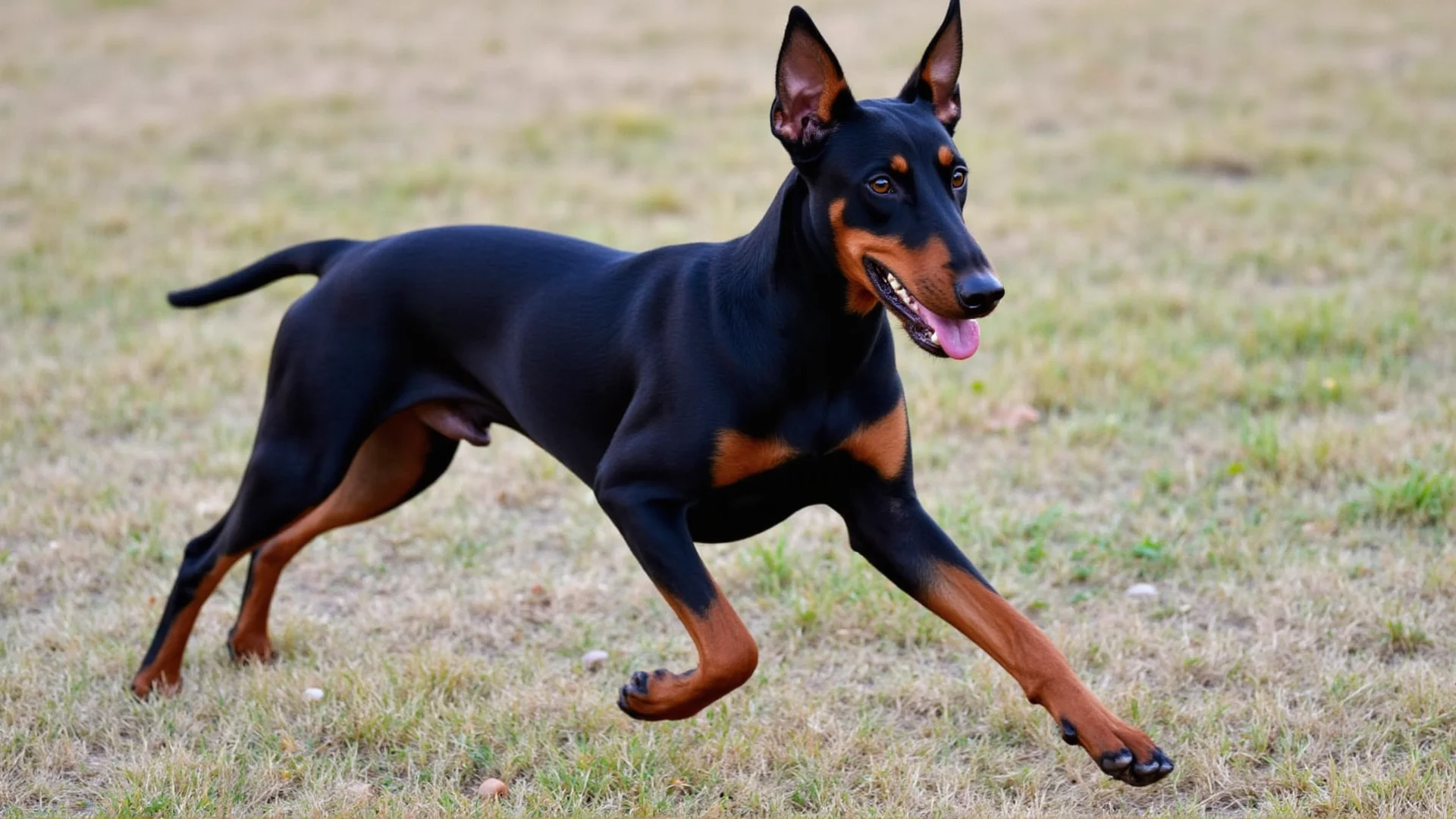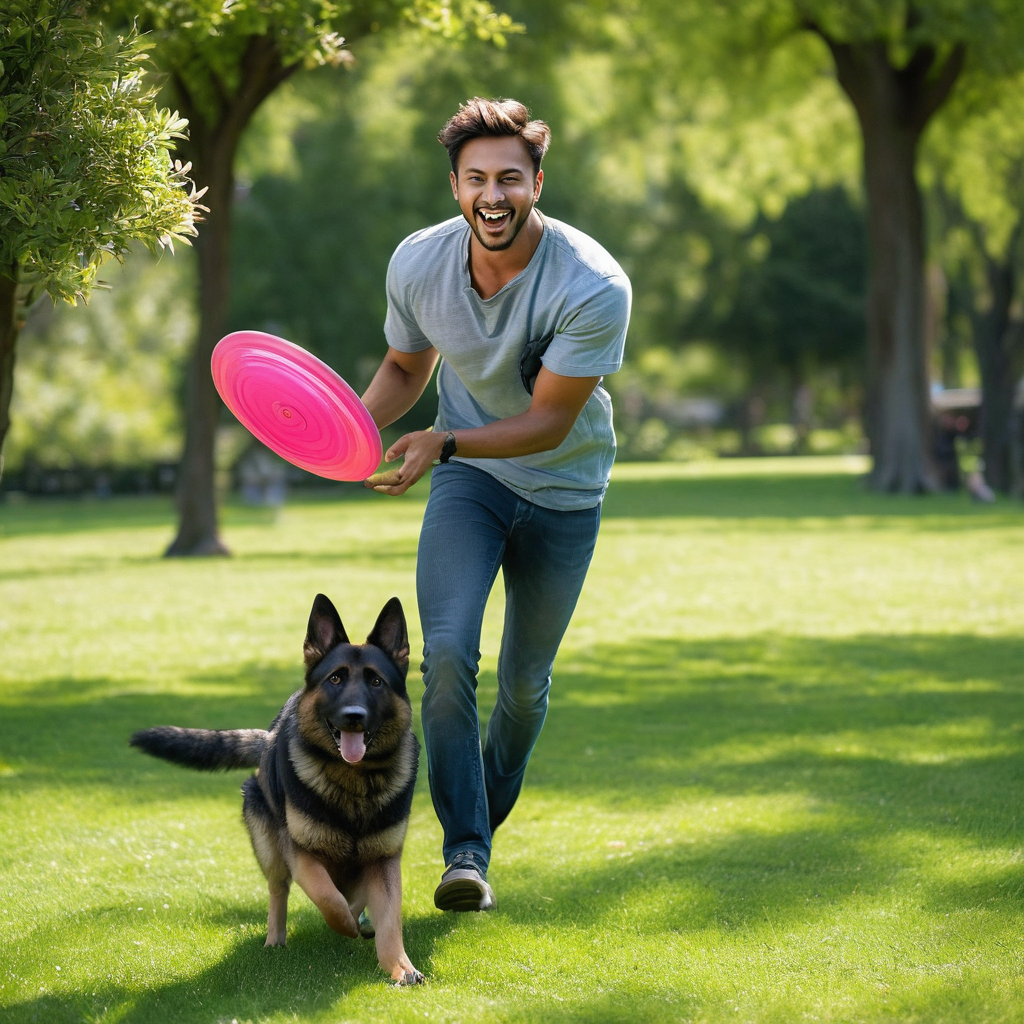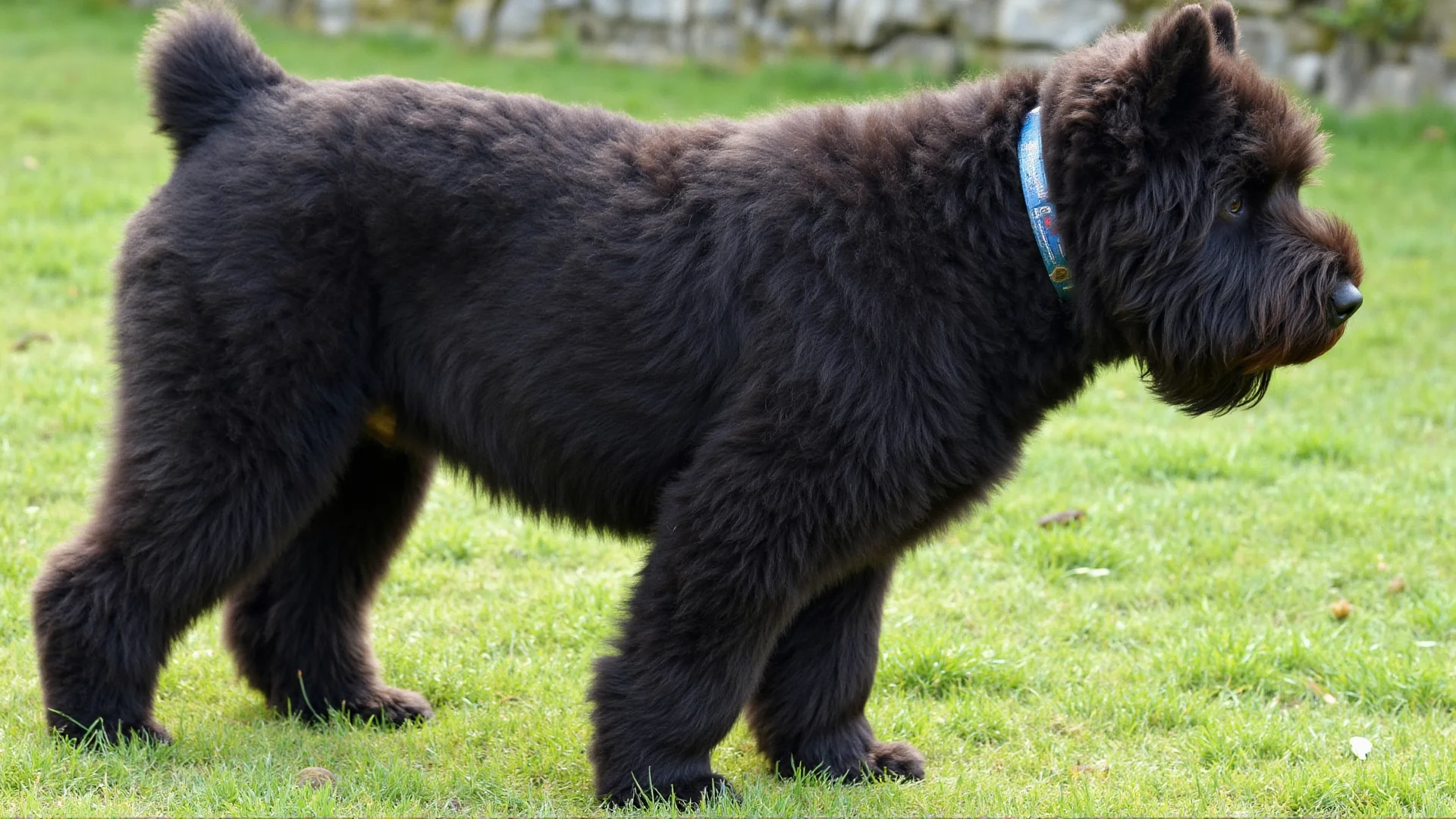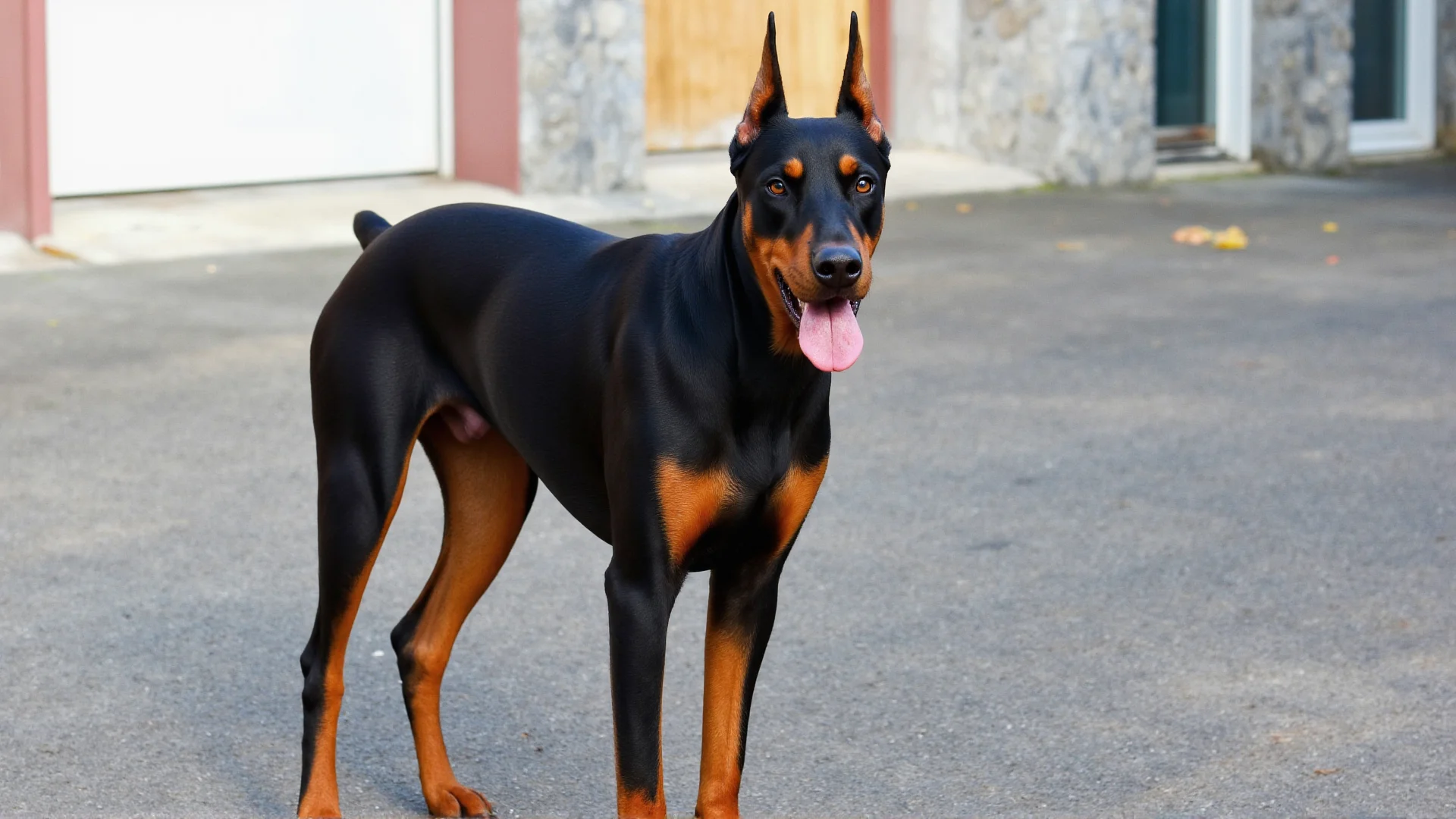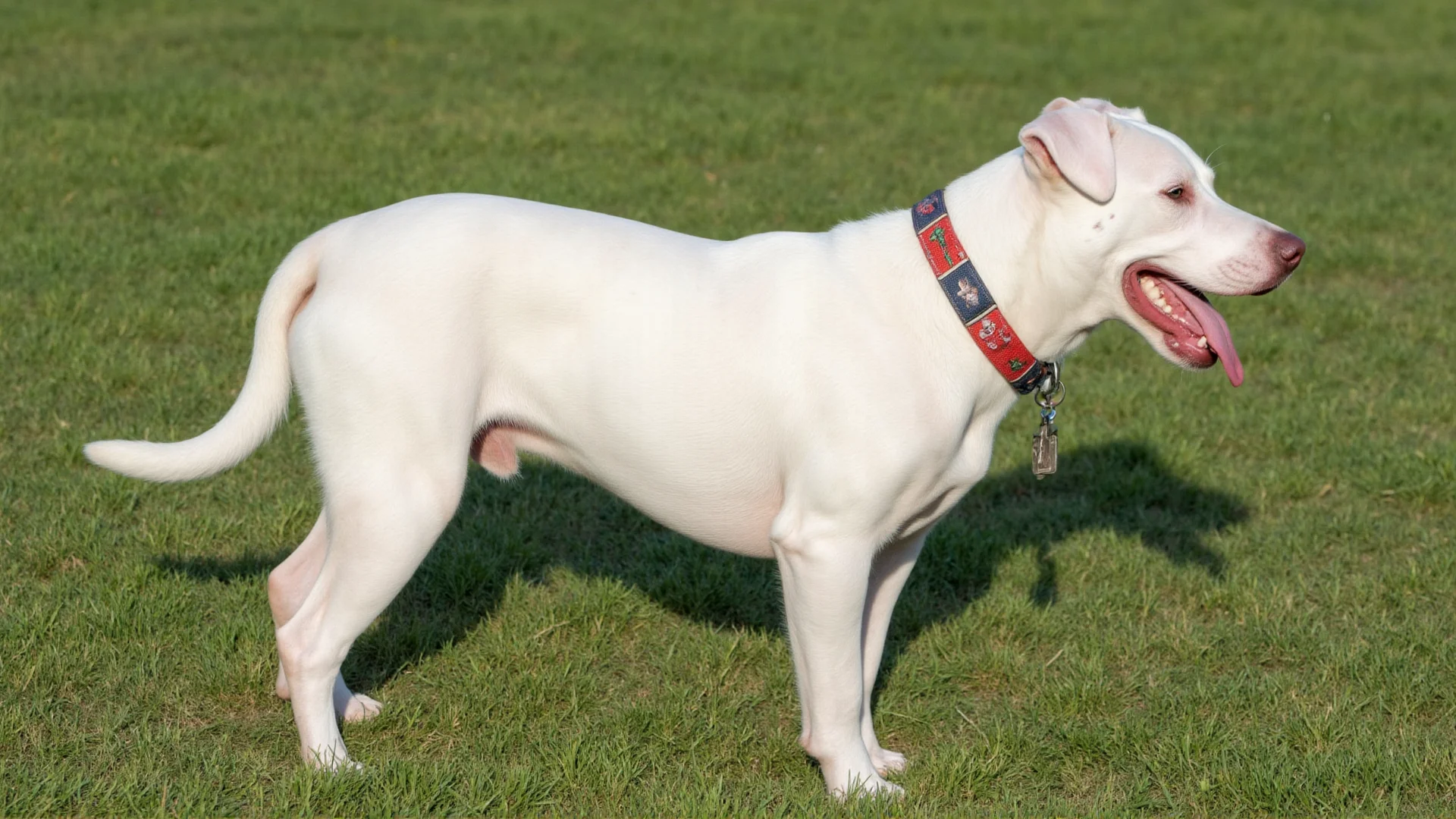The Doberman Pinscher: Your Complete Guide to the Ultimate Guard Dog
When it comes to guard dogs, few breeds command as much respect and admiration as the Doberman Pinscher. These sleek, powerful canines have earned their reputation as one of the world's premier protection dogs through decades of loyal service in military, police, and family protection roles. If you're considering a Doberman as your guardian companion, this comprehensive guide will provide you with everything you need to know about these remarkable dogs.
The Doberman's Natural Guardian Instincts
Bred for Protection
The Doberman Pinscher was specifically developed in the 1890s by German tax collector Karl Friedrich Louis Dobermann, who needed a loyal and protective companion for his dangerous job. This purposeful breeding has resulted in a dog with an innate understanding of protection work that few breeds can match.
Unlike many dogs that require extensive training to develop protective behaviors, Dobermans possess natural guardian instincts that include:
- Territorial awareness: Dobermans naturally monitor their environment and are quick to notice unusual activity
- Threat assessment: They can distinguish between normal visitors and potential threats
- Loyalty to family: Their protective instincts are strongest when it comes to their human pack
- Controlled aggression: Well-bred Dobermans can escalate their response appropriately to match the level of threat
Physical Attributes That Make Dobermans Exceptional Guards
Size and Strength
Dobermans are large, powerful dogs that command immediate respect. Males typically weigh between 75-100 pounds and stand 26-28 inches tall, while females are slightly smaller at 60-90 pounds and 24-26 inches. Their muscular build and athletic frame make them formidable deterrents to potential intruders.
Speed and Agility
What sets Dobermans apart from other large guard dog breeds is their remarkable speed and agility. They can reach speeds of up to 35 mph and possess the endurance to maintain pursuit over considerable distances. This combination of size and athleticism makes them particularly effective as both deterrents and active protection dogs.
Intimidating Appearance
The Doberman's sleek, powerful silhouette and alert expression create an immediate impression of strength and intelligence. Their natural stance is confident and ready, which often serves as an effective deterrent before any confrontation occurs.
Training Your Doberman for Guard Work
Foundation Training
Before any specialized protection training begins, your Doberman must master basic obedience. This foundation is crucial because a guard dog must be completely controllable and responsive to commands. Focus on:
- Sit, Stay, Come: These basic commands must be rock-solid
- Heel: Your Doberman should walk calmly beside you without pulling
- Down/Stay: The ability to remain in position until released
- Quiet command: Essential for controlling barking behavior
Socialization is Critical
Proper socialization is perhaps the most important aspect of raising a well-balanced guard dog. A Doberman that hasn't been properly socialized may become overly aggressive or fearful, making them unreliable as protectors. Expose your puppy to:
- Various people of different ages, ethnicities, and appearances
- Other animals and dogs
- Different environments and situations
- Various sounds and stimuli
Alert Training
Teaching your Doberman when and how to alert is fundamental to guard dog training. Start with basic alert training:
- Encourage natural alerting: When your dog barks at unusual sounds, acknowledge with "Good alert" but then give a "Quiet" command
- Controlled barking: Teach your dog to bark on command and stop on command
- Perimeter awareness: Train your dog to patrol and monitor specific areas of your property
- Stranger protocols: Establish clear rules for how your dog should behave around visitors
Advanced Protection Training
Professional Training Considerations
While basic guard dog behaviors can be taught at home, advanced protection training should be handled by experienced professionals. Personal protection training involves teaching dogs to physically intervene in threatening situations, which requires expertise to ensure safety and reliability.
Types of Guard Dog Training
There are different levels of guard dog training to consider:
- Watchdog training: Alert barking and deterrent presence
- Property guardian: Patrolling and defending specific areas
- Personal protection: Defending family members on command
- Executive protection: Advanced training for high-risk situations
Living with a Doberman Guard Dog
Exercise Requirements
Dobermans are high-energy dogs that require substantial daily exercise. A well-exercised Doberman is a well-behaved Doberman. Plan for:
- 60-90 minutes of vigorous exercise daily
- Mental stimulation through training and puzzle games
- Regular opportunities to run and play off-leash in secure areas
- Variety in exercise routines to prevent boredom
Family Integration
Despite their reputation as fierce guard dogs, Dobermans are known for being gentle and affectionate with their families. They often form particularly strong bonds with children and can be incredibly patient and protective with young family members.
Managing Protective Behaviors
Living with a guard dog requires ongoing management of their protective instincts:
- Establish clear rules about when protective behavior is appropriate
- Maintain regular training sessions to keep commands sharp
- Ensure all family members can control the dog
- Have protocols for visitors and service personnel
Health Considerations for Working Dobermans
Common Health Issues
Dobermans are generally healthy dogs, but they are prone to certain conditions that potential owners should be aware of:
- Dilated Cardiomyopathy (DCM): A heart condition that affects many Dobermans
- Hip Dysplasia: Can affect mobility and working ability
- Wobbler Syndrome: A condition affecting the cervical spine
- Von Willebrand's Disease: A bleeding disorder
Maintaining Working Condition
A guard dog must be in peak physical condition to perform their duties effectively. This requires:
- Regular veterinary checkups
- Proper nutrition for active working dogs
- Monitoring for signs of stress or overwork
- Appropriate rest and recovery time
Legal and Ethical Considerations
Liability Issues
Owning a protection-trained dog comes with significant legal responsibilities. Consult with legal professionals and insurance companies about:
- Liability insurance coverage
- Local laws regarding guard dogs
- Property signage requirements
- Incident reporting protocols
Ethical Ownership
Responsible ownership of a guard dog means:
- Never using your dog to intimidate or threaten others inappropriately
- Ensuring your dog is properly contained and controlled
- Maintaining ongoing training and socialization
- Being prepared to handle the responsibilities that come with owning a powerful dog
Choosing the Right Doberman
Bloodlines and Breeding
Not all Dobermans are suited for guard work. When selecting a puppy or adult dog for protection purposes, consider:
- Working bloodlines: Dogs bred specifically for protection and working ability
- Temperament testing: Evaluation of drive, confidence, and trainability
- Health clearances: Parents should have appropriate health testing
- Breeder reputation: Work with breeders who understand protection dog requirements
Age Considerations
You can start with either a puppy or an adult dog, each having advantages:
- Puppies: Can be molded to your specific needs but require extensive training
- Adult dogs: May have some training but need time to bond and adapt to new handlers
- Trained adults: Expensive but ready to work immediately
Conclusion: The Doberman as Your Guardian Partner
The Doberman Pinscher represents the pinnacle of guard dog breeding, combining intelligence, loyalty, physical capability, and natural protective instincts in one impressive package. However, owning a Doberman guard dog is not a decision to be taken lightly. These dogs require experienced handling, consistent training, adequate exercise, and ongoing socialization to reach their full potential as reliable protectors.
When properly trained and managed, a Doberman can provide unparalleled protection for your family while also being a loving, devoted companion. Their intelligence and eagerness to please make them highly trainable, while their natural protective instincts provide a solid foundation for guard work.
If you're considering a Doberman as your guard dog, invest in professional training, commit to ongoing education about the breed, and prepare for the responsibility that comes with owning one of the world's most capable protection dogs. With the right approach, a Doberman can be both your family's guardian and your most loyal friend.
Remember that the best guard dog is one that never has to prove itself in a real confrontation. The Doberman's imposing presence and alert demeanor often serve as the perfect deterrent, keeping your family safe simply through their commanding presence and unwavering vigilance.
